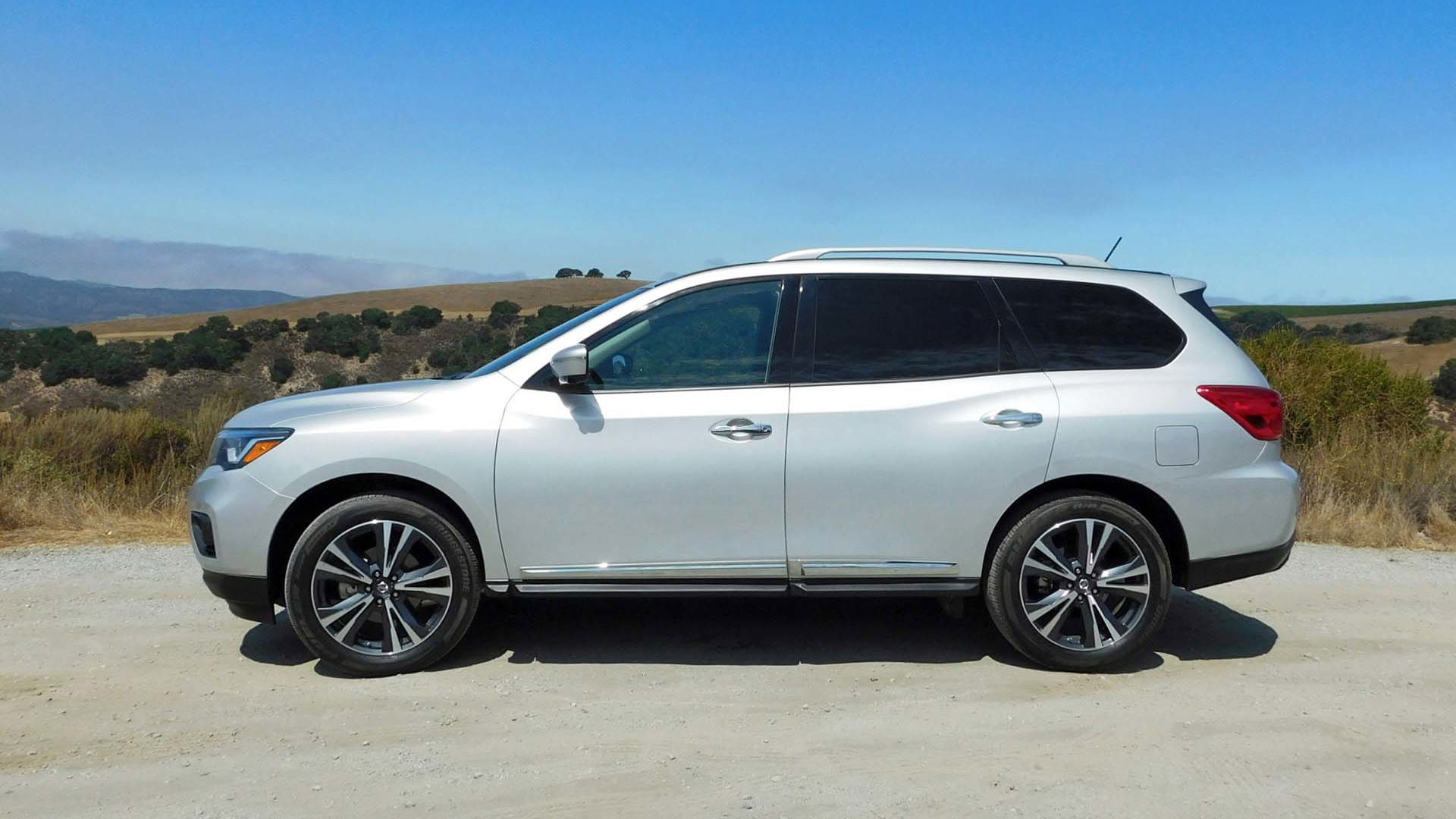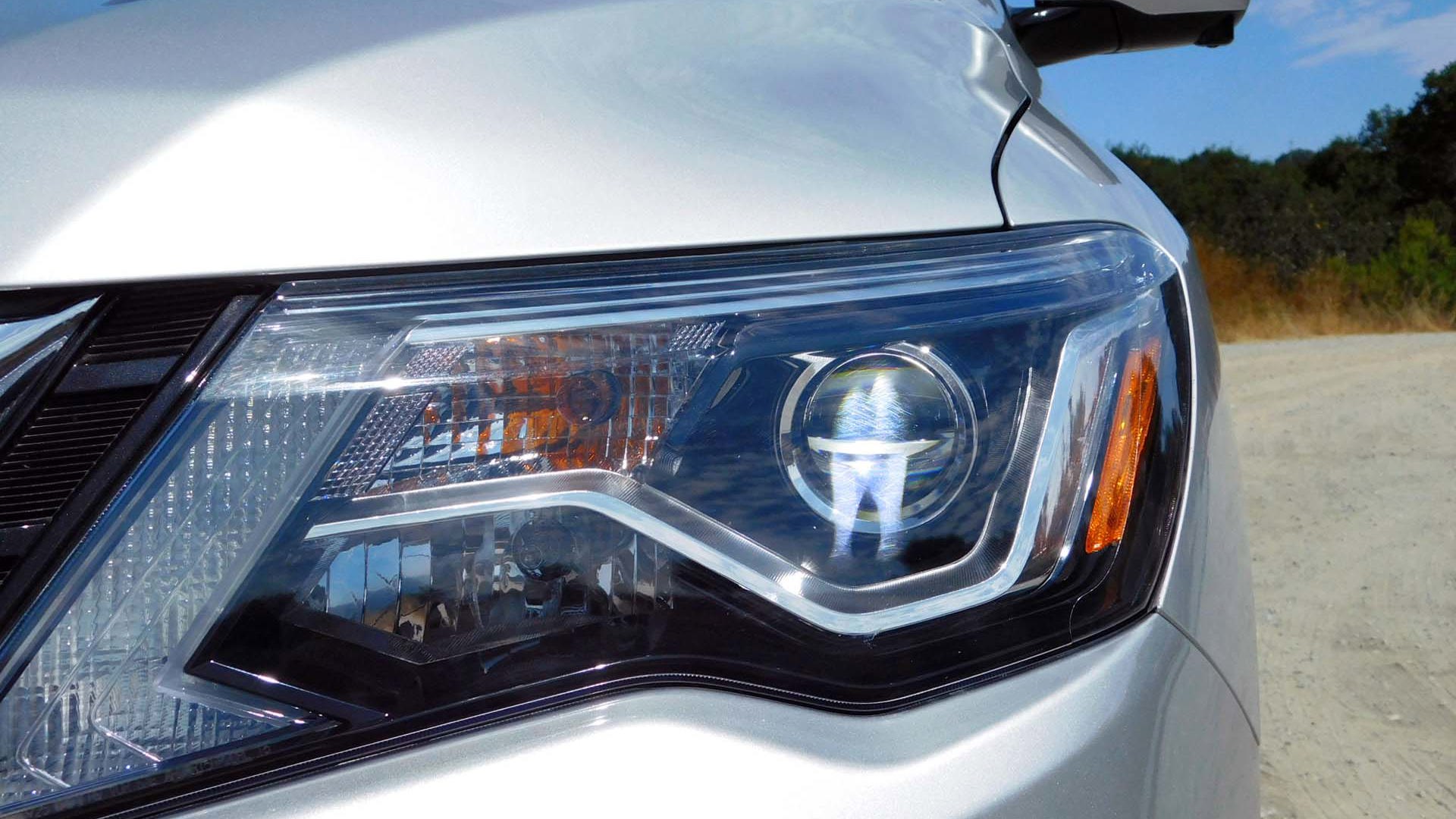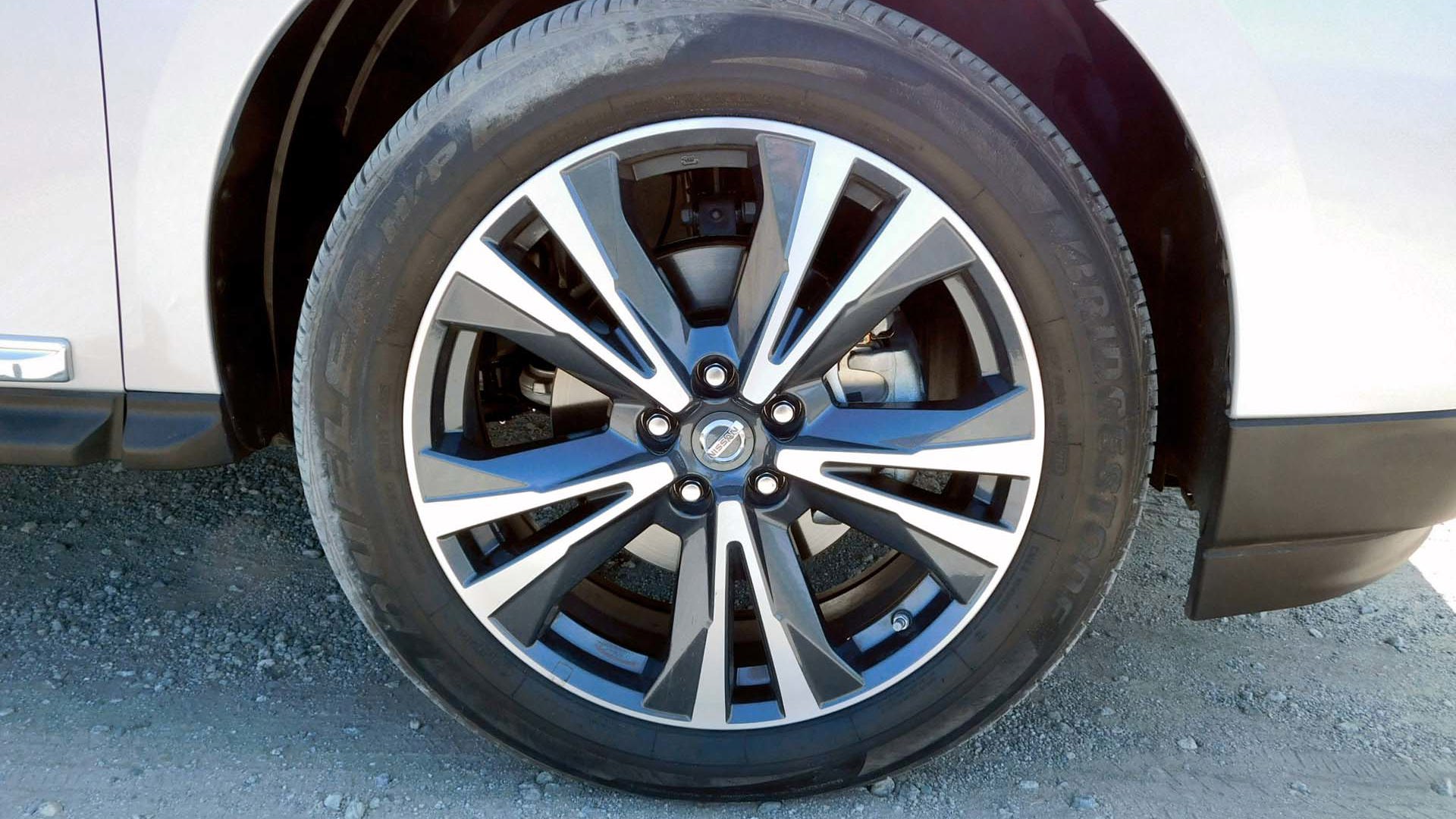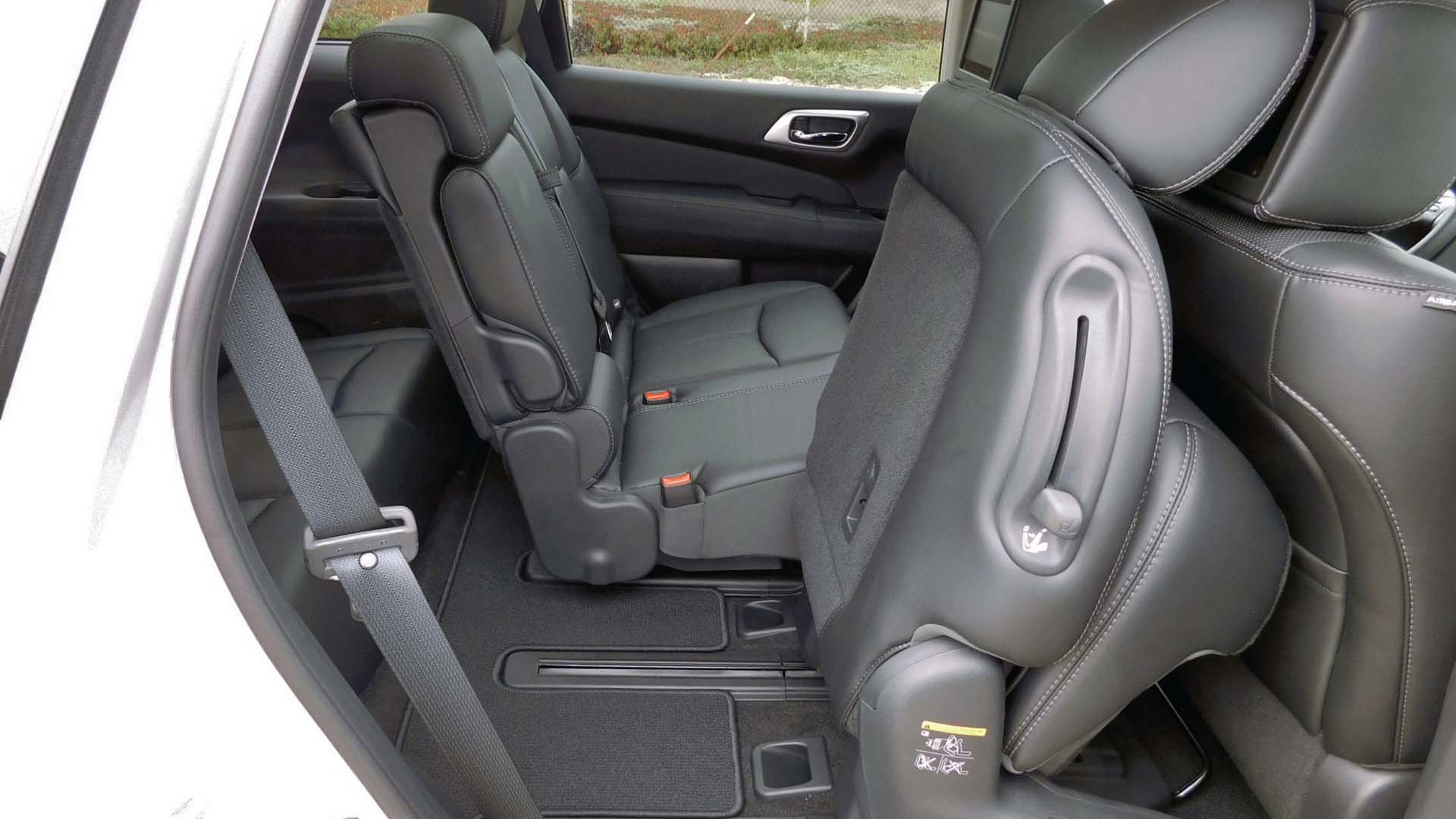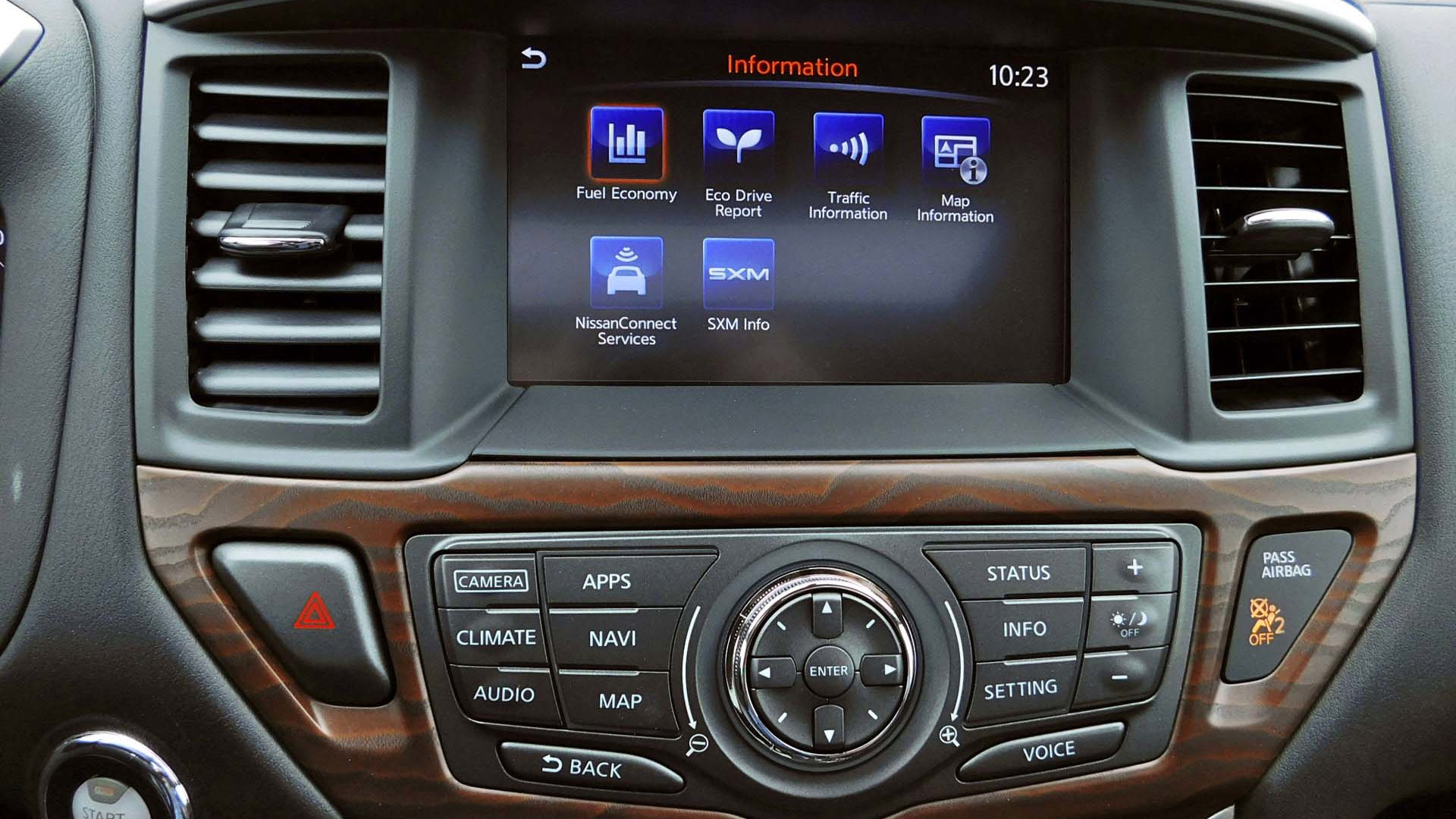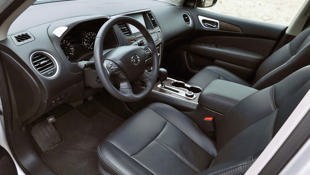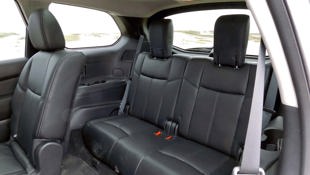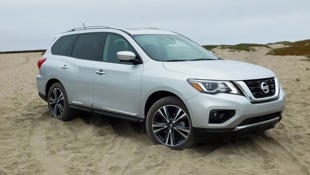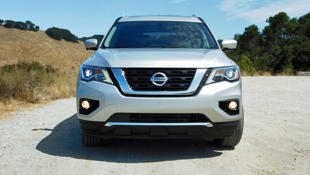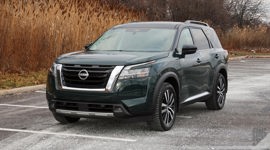Okay, it's no dune buggy, but churning through the soft, deep sand of an empty California beachfront property, Nissan's 2017 Pathfinder proved that despite now sporting unibody construction, a CVT automatic and a whole electronics outlet’s worth of technology, it still has some vestigial remnants of the adventure-ready unstoppability that made the first-generation Pathfinder such a success in the mid-1980s. Certainly my leather-upholstered, woodgrain-trimmed Platinum test car was willing to go much further into the sandy wilds than I was, given the lack of any tow vehicles standing by to rescue me if I got stuck.
Certainly my leather-upholstered, woodgrain-trimmed Platinum test car was willing to go much further into the sandy wilds than I was...
There's no lack of competition standing by for the Pathfinder, however: In the mid-size three-row crossover segment the Pathfinder slugs it out with an imposing list of heavy-hitters. Nissan's family adventure vehicle sells well in Canada, sitting in fourth spot for the first half of 2016 behind the Kia Sorento, Toyota Highlander and Ford Explorer. In the U.S., where the numbers are bigger and the stakes are higher, the battle is tougher: There the Honda Pilot, Chevrolet Traverse, and GMC Acadia also finished close ahead of the Smyrna, Tennessee-built Pathfinder, and so did Hyundai's Santa Fe, too, although its U.S. numbers muddy the picture by combining two-row and three-row versions.
In a such a competitive environment you can't afford to rest on your laurels, and so four years after the current fourth-generation Pathfinder hit the market it's been given a thorough mid-cycle makeover. To introduce the refreshed vehicle Nissan invited journalists to Carmel, California, which is how I ended up on a beach in Moss Landing, buried up to the rims in fine California sand.
Styling-wise, Nissan has aimed for a more rugged, SUV-like appearance, replacing the 2016 Pathfinder's smooth, sleek front end with a new more deeply sculpted front fascia, a new grille, new hood, and new headlights with signature LED daytime running lights. At the back there's a new rear bumper and taillights, and at the corners there are new 18- and 20-inch wheel designs. The changes are subtle if seen in isolation, but if you park the old and new vehicles side-by-side there's no mistaking one for the other, with the 2017 Pathfinder looking decidedly more aggressive, yet actually achieving a better aerodynamic drag coefficient.
See also: 2016 Nissan Pathfinder V6 Platinum 4WD Test Drive
Under the hood, the 2017 Pathfinder gets a new version of Nissan's 3.5L V6 engine, featuring direct fuel injection, electromagnetic valve timing control (e-VTC) and a tuned air intake system. The new engine produces 284 hp at 6,400 rpm and 259 lb-ft of twist at 4,800 rpm, up from 260 hp and 240 lb–ft of torque for the previous engine. The additional power knocks a couple tenths of a second off the 0–100 km/h time and produces stronger acceleration when passing or exiting corners. Certainly my test vehicle pulled powerfully on highway on-ramps. Preliminary fuel consumption ratings are 11.6 / 8.5 L/100 km (city/highway) for front-wheel drive models, a slight improvement over the 2016 Pathfinder's 11.9 / 8.6 rating.
In addition to the engine changes, Nissan has rejigged the 2017 Pathfinder's CVT shift programming to provide more natural-feeling simulated shifts (what Nissan calls dynamic step or D-Step logic). On the road the transmission works unobtrusively and unremarkably in the background, and perhaps the best compliment I can give the CVT is that it's really quite difficult to even tell it's a CVT – other than a lack of manual shift capability (all you get is a Low range selection for engine braking when descending longs hills) the CVT feels almost entirely like any other automatic transmission, except with the added ability to sometimes hold revs a little more steady during moderate acceleration.
The CVT doesn't hold the Pathfinder back when it comes to towing capacity, either: Nissan rates the 2017 Pathfinder at a class-leading 2,722 kg (6,000 pounds) standard towing capacity, about 454 kg (1,000 lb) ahead of its competition. As Nissan chief marketing manager Andrew Harkness points out, this extra capacity means the Pathfinder can keep up with family towing requirements even as the family moves up from a small starter camper or a boat with a single-axle trailer, to a larger camper or a boat with a double-axle trailer.
The base Pathfinder S models come with front-wheel drive, while higher trim levels get Nissan's intuitive four-wheel-drive system. This system features a console-mounted controller that allows you to select between two-wheel-drive mode (for maximum highway economy), on-demand Auto mode (sends power to the rear wheels as needed) and four-wheel-drive lock mode (splits the power between the front and rear wheels). There's also a button to engage hill descent control, which is the lone item of off-road equipment.
A criticism that's been aimed at the Pathfinder in the past is that it lacks any real driving engagement, and to address this Nissan has slightly stiffened the spring rates for 2017, retuned the shock absorbers, quickened the steering ratio and changed the tires. Nissan says the changes provide a better steering feel and 10 percent less body roll in the corners without any increase in ride harshness. On the road I found the 2017 Pathfinder to be well-sorted, with a nice blend of comfort and composure. Where it really shines is on the highway (it has great on-centre steering feel and glides along serenely), but it's not afraid of twisting canyon roads either.
Inside, the Pathfinder continues to offer seating for seven, with easy access to the third row thanks to articulated second-row seat cushions that flip up before the seat folds forward, allowing the second row seats to move forward almost flat. An additional trick allows the passenger-side second row seat to dip down and slide forward instead if there's a child seat installed, allowing slightly more restricted access to the third row without removing the child seat.
Of course no refresh is complete these days without a helping of new technology and driver assistance features, and for 2017 the Pathfinder gets plenty of both. Bluetooth connectivity and satellite radio is now standard on all trim levels including the base S model. As well, all trim levels get a bigger new infotainment touchscreen (eight inches versus the previous seven-inch screen) with a new user interface supporting swipe and pinch-to-zoom gestures, an improved icon-based menu system, and new connectivity features. I was able to find most of the infotainment functions I was looking for reasonably quickly, even while driving around in unfamiliar territory, so I'll give the system an initial passing grade. Other available new tech (depending on trim levels) includes a motion-activated tailgate, moving object detection for Nissan's around-view monitor, adaptive cruise control, forward emergency braking, and forward collision warning, in addition to the previously available blind spot warning and cross traffic alert systems.
The 2017 Nissan Pathfinder will be arriving at dealerships in mid-September and will be sold in S, SV, SL, SL Tech and Platinum trim levels.




